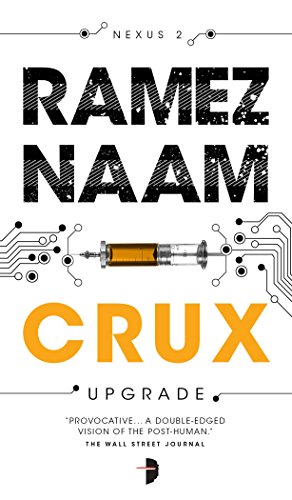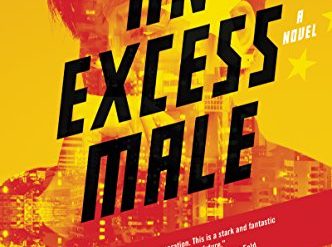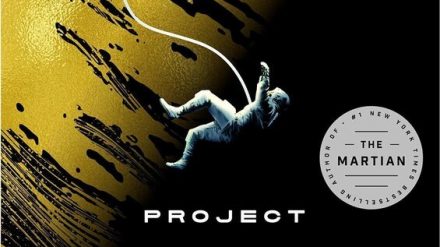Estimated reading time: 6 minutes

There are a lot of moving parts to this novel. We enter the thoughts of ten principal characters, by my count. The action unfolds in tiny chapters, switching from one character to another; few of these chapters are more than a handful of pages long. The print edition runs to more than 600 pages, and not a single one is dull. This science-based sci-fi thriller is, indeed, a thriller.
A science-based sci-fi novel
Yet what is most exciting of all about this novel is the science on which it is based. As the author, Ramez Naam, notes in a postscript (“The Science of Crux“), every seemingly unlikely or impossible superhuman ability described in the book is well within the bounds of possibility. He cites current research that strongly supports his contention. Thus, a reader unfamiliar with the devices and techniques of science fiction might find this story unbelievable or even silly. But it is nothing of the sort. Naam is painting a picture of what the future might well hold for us by the middle of this century. Unless you closely follow developments in neuroscience, nanotechnology, and artificial intelligence, you will be amazed.
Crux (Nexus Trilogy #2) by Ramez Naam (2015) 624 pages ★★★★★
Is immortality possible?
For example, many researchers believe is possible that within decades we will have the ability to upload consciousness onto a computer. As one of Naam’s characters muses, “What mattered was pattern, not substrate. A physical brain was an information processor and nothing more. A mind was the information being processed, not the physical brain that did the processing. A digital brain, with digital neurons and digital synapses and digital signals passing through it, could process that information just the same, could give rise to a mind just as well.” In other words, a form of immortality may be possible someday by transferring our minds to cybernetic bodies.
As Naam writes in his postscript, “it appears that a super-computer capable of simulating an entire human brain and do[ing] so as fast as a human brain should be on the market by roughly 2035-2040. And of course, from that point on, speedups in computing should speed up the simulation of the brain, allowing it to run faster than a biological human’s.”
Previously, in the trilogy’s first book . . .
Crux is the second book in Naam’s Nexus trilogy. In Nexus, the first entry in the series, a trio of young scientists have created a much-improved version of a popular street drug that permits users to link with each other telepathically. (“You could experience anything now, touch another’s mind and see the world how they saw it, feel their experiences, their adventures . . .”) It’s called Nexus 5. Because their work is illegal, they are being hunted by the Emerging Risks Directorate (ERD) of the Department of Homeland Security. Hysteria has mounted in the United States about the superhuman (actually, transhuman) abilities of those who take Nexus 5. Right-wing politicians have converted this hysteria into legislation and power for themselves, undertaking a campaign to destroy those they now consider “non-human.”
The three young scientists are captured in an ERD raid on a Nexus 5 party they’ve organized. With threats to his colleagues and all those who attended the party, ERD forces the central figure, Kaden (Kade) Lane, to go undercover for them to ensnare a prominent Chinese neuroscientist who may even have surpassed the accomplishments of Kade’s team. The setting then moves from the USA to Bangkok. The ensuing action is nonstop and beautifully executed. Nexus ends with Kade on the run and all his colleagues and friends locked up in a black site.
A thrilling, action-packed story
As Crux opens, Kade is hiding out in a series of monasteries in Thailand and vicinity, pursued both by the ERD and by bounty-hunters seeking the $10 million reward for turning him in alive. He is under the protection of a Chinese super-soldier named Feng whose former boss and patron, the Chinese neuroscientist, has died in a fiery attack by the ERD or the CIA.
Meanwhile, Samantha (Sam) Cataranes, the ERD agent who had been sent to capture him, is on the run herself. In a climactic scene at the conclusion of Nexus, she had witnessed her employers ruthlessly murdering dozens of her friends. For Sam, this was a conversion experience. Following separate paths in the same Southeast Asian region, Sam and Kade dash from one temporary haven to another, frequently escaping capture or death with little time to spare. Eventually, they are pursued not just by the ERD and bounty-hunters but the CIA, Chinese hardliners, and a megalomaniacal Indian billionaire.
They’re freedom fighters, even if they don’t know it
Although they don’t think of themselves as freedom fighters, that is exactly what they are: they’re fighting for the freedom to become better human beings—and in the process to become posthuman. But there is nothing abstract and intellectual about Kade’s goals. His overriding concern is the survival of the human race. “Humanity was failing,” he believes. “It could not solve the problems it now faced. But those millions of Nexus-augmented minds could. They could become a single post-human intelligence of epic scale. A god forced out of humanity, finally able to manage the planet through its Anthropocene calamities.”
Please note again: though this story may sound overly complex and unlikely in its details, the possibilities that come to light in this novel are real. There is even a peer-reviewed Journal of Posthuman Studies that was established at Pennsylvania State University in 2017.
About the author
According to the biography on his site, Ramez Naam “holds 19 patents related to search engines, information retrieval, web browsing, artificial intelligence, and machine learning.” He spent 13 years in senior positions leading teams at Microsoft and founded his own successful technology company.
For related reading
I’ve also reviewed the author’s nonfiction book, More Than Human: Embracing the Promise of Biological Enhancement (How to make humans smarter, stronger, and healthier).
You might also be interested in 20 good nonfiction books about the future, 10 great medical and biological thrillers, and Two dozen good books about artificial intelligence.
For more good reading, check out:
- These novels won both Hugo and Nebula Awards
- The ultimate guide to the all-time best science fiction novels
- 10 top science fiction novels
- The top 10 dystopian novels
- Ten new science fiction authors worth reading now
And you can always find my most popular reviews, and the most recent ones, on the Home Page.


























